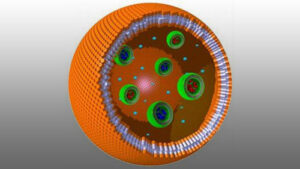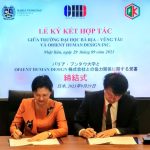Radboud University’s Department of Molecular Materials has fabricated the first plastic eukaryotic cell based on the structure of a water droplet. This is the first artificial cell capable of carrying out separate chemical processes in each organelle, comparable to a natural cell. The research was featured on the cover of the magazine Nature Chemistry.
Scientists have previously attempted to create artificial cells and synthetic DNA capable of self-reproducing and replicating into entire cell membranes. For the first time, scientists have utilized polymers to create artificial eukaryotic cells that are completely organized and function like natural cells.

Eukaryotic cells are the principal structural elements for complex systems on living organisms. Several organelles exist within eukaryotic cells and execute various roles through chemical processes in a very tiny area. Organelles that are isolated from one another and can carry out chemical reactions independently is a spectacular sight. Why cells can carry out reactions on such a small scale, which is incredibly difficult to achieve in the laboratory, has long been a major concern for chemists.
Scientists at Radboud University Nijmegen in the Netherlands have successfully created the first plastic eukaryotic cell that can execute chemical reactions on a very tiny scale. Jan van Hest, a professor who has successfully created artificial organelles, stated: “Our research team is working hard to develop cells that are more compatible with real creatures. In the future, fatty acids might be used to create artificial cells. The next stage will be to develop artificial cells capable of metabolizing metabolism in order to generate their own energy.”
The researcher employed a teardrop model to shape the cell structure in plastic. To fabricate the organelles, scientists used PS plastic microspheres with enzymes inside to carry out chemical reaction cycles. Lastly, a centrifuged polybutadiene layer surrounds the cell and serves as the cell membrane.
This is nature’s first artificial eukaryotic cell separated into cell-like sections. Cell division allows enzymes to carry out separate chemical processes, just like in nature. According to Professor Van Hest: “We are attempting to regulate the function of chemicals at each organelle within the cell. By doing so, we will have a greater understanding of how natural living cells operate. After that, we will model and construct cells that are more comparable to those seen in nature.”
Source: khoahoc.tv











